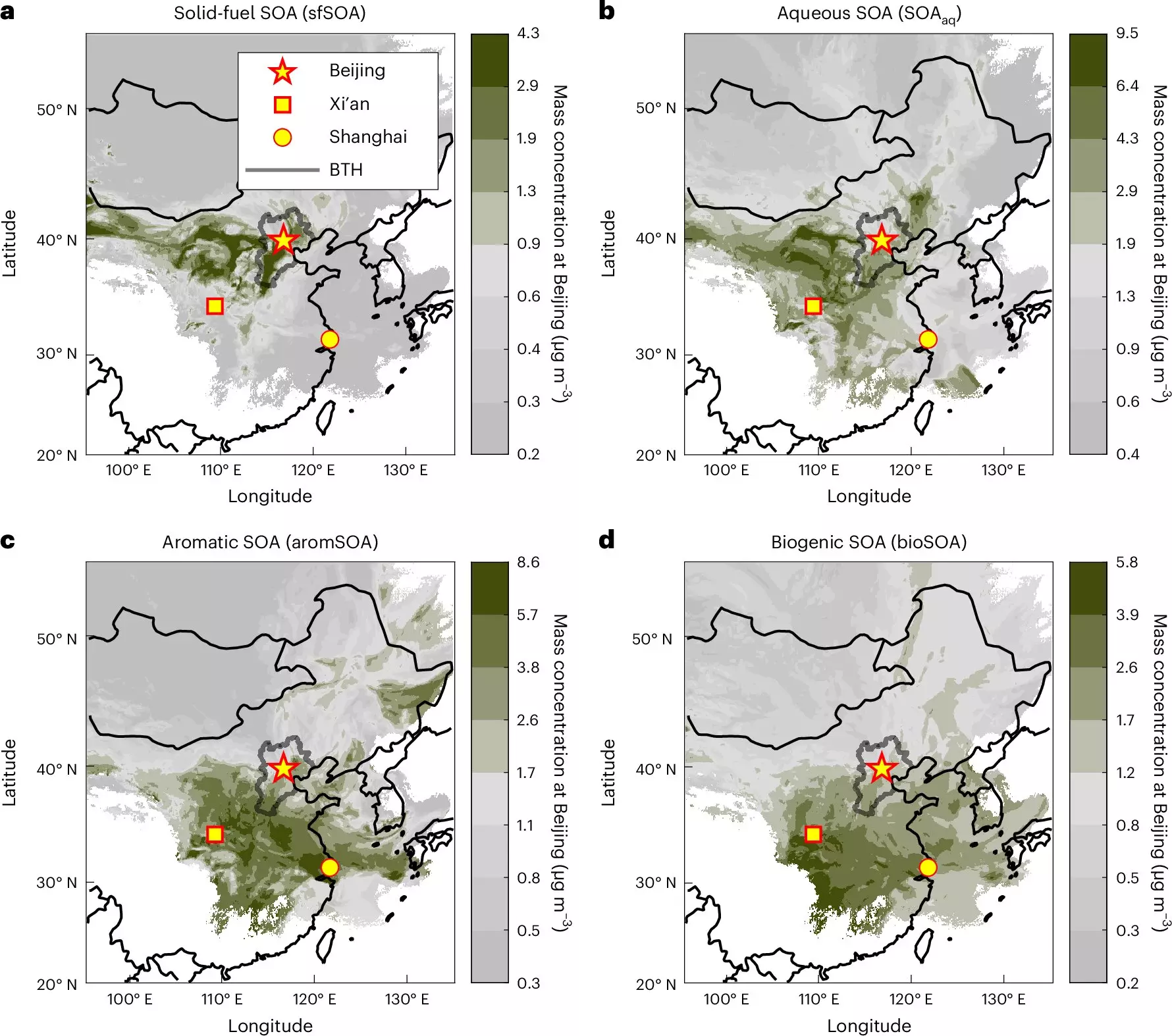Air pollution has become a crisis of epic proportions, contributing to millions of premature deaths worldwide each year. Among the worst-affected areas is Beijing, China, where thick smog often envelops the city, posing significant health risks to its residents. Understanding the sources of this pollution is crucial for implementing effective air quality management strategies. Recent research undertaken by an international team spearheaded by the Paul Scherrer Institute (PSI) unveils new insights into this pressing issue. Through innovative methodologies, this study brings forth critical data that could aid in overcoming the challenges of air pollution.
At the heart of this research is a mobile aerosol mass spectrometer, a cutting-edge device that allows for real-time analysis of aerosols’ molecular composition. Under the guidance of environmental scientist Kaspar Dällenbach, researchers collaborated with institutions such as the Beijing University of Chemical Technology and the University of Helsinki. Together, they embarked on a mission to dissect the smog-plagued air of Beijing, examining it through a molecular lens that promises to shed light on its origins and variability throughout the year.
The significance of utilizing advanced technology is paramount; previous studies often struggled to pinpoint the exact sources of pollution due to the complex nature of aerosol composition, which evolves through chemical reactions in the atmosphere. By employing this novel mass spectrometry technique, the researchers could isolate specific constituents of the smog, bringing clarity to an otherwise obscured issue.
One of the most noteworthy findings of the study is the distinction of aerosol sources between summer and winter months. The research reveals that the pollutants swarming Beijing are not static; instead, they exhibit geographical and chemical diversity influenced by seasonal weather patterns. In winter, for instance, the origin of secondary organic aerosols can largely be traced to the combustion of wood and coal—significant contributors in the greater Beijing-Tianjin-Hebei region. Conversely, summer brings different dynamics, as air flows from southern regions lead to increased urban emissions, predominantly associated with the high levels of traffic and industrial outputs from the Xi’an-Shanghai-Beijing corridor.
This seasonal variation emphasizes the need for tailored strategies aimed at combating air pollution. Public health policies must consider not only current pollution levels but also the unique contributors that fluctuate with the seasons.
Dällenbach’s research underscores a critical dimension of air quality management: pollution in Beijing cannot be viewed in isolation. The findings advocate for a more coordinated approach that encompasses not just the metropolis itself but also the wider geographical area surrounding it. As indicated by the study, smog is not merely a local phenomenon; it forms part of a regional atmospheric confluence where pollutants can travel vast distances, pooling together and exacerbating health risks.
To effectively address air quality issues, regional cooperation is paramount. Policies must extend across borders to mitigate emissions that contribute to the accumulating pollutants that circle around Beijing. This necessitates collaboration between urban planners, policymakers, and public health officials at multiple levels of governance.
Dällenbach and his team are not resting on their laurels with their findings in Beijing; they plan to extend this research methodology to smog events in Europe and other urban centers, particularly those in the Global South that remain underrepresented in scientific studies. This broader endeavor highlights the importance of global cooperation and knowledge-sharing in tackling one of humanity’s most significant threats—air pollution.
Through enhanced understanding of aerosol behavior and their sources, cities around the world could adopt more successful polices for improving air quality, protecting public health, and ensuring a livable environment for future generations. The urgent call to action has never been clearer, and science such as this provides a beacon of hope against a backdrop of an increasingly polluted world.
The research conducted by Dällenbach and his team not only represents a leap forward in our understanding of air pollution sources in Beijing but also opens doors to a systematic approach towards combating one of the most pressing challenges facing urban centers globally. This is indeed a critical time for action, united by knowledge and guided by robust data.


Leave a Reply